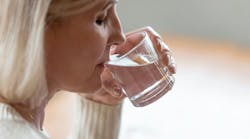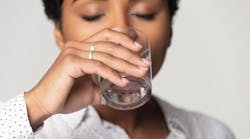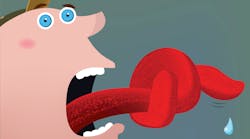It’s no secret that millions of people suffer from dry mouth. Many oral health-care providers would say that they encounter patients with signs of xerostomia on a near-daily basis. When left untreated, individuals can experience oral pain, increased caries risk, periodontal complications, candidiasis, tissue sores and cracks, and nutrient deficiencies.1 For years, all we knew to tell them was to drink more water and use over-the-counter oral moisturizers found in the toothpaste aisle, but times have changed.
Understand the source
The cause of xerostomia is often multifactorial, so it’s important to assess the situation comprehensively. The most common culprits that clinicians are familiar with are medications—specifically agents like anticholinergics, antidepressants, opioids, and bronchodilators.2 These drugs are designed to block and inhibit a variety of receptors and neurotransmitters within the body, which not only decrease symptoms of the targeted disease but also slow the body’s salivary production. In many individuals, the xerogenic effects they experience are compounded due to a common state of polypharmacy—taking five or more prescription or over-the-counter medications at once. Other contributors might include aging, chemotherapy, radiation therapy, nerve damage, a host of health conditions like diabetes and Sjögren’s syndrome, sleep-disordered breathing, mouth breathing, and drug and alcohol use.1 While some of these can’t be eliminated or controlled, discussing them with the patient during routine hygiene visits is crucial in finding individualized solutions.
Know your arsenal
Increasing fluid intake may be a natural response to dry mouth, but many patients don’t realize that beverages containing caffeine or alcohol have a counteractive effect. Additionally, sweet and acidic drinks can significantly increase the caries risk in an individual lacking the saliva needed to naturally buffer the resulting lowered oral pH. Whenever possible, plain water is best. Other lifestyle considerations might include using a humidifier (especially while sleeping), nasal breathing, smoking cessation, and eating foods with added liquids like soups and sauces. Acupuncture has also been shown to be beneficial in certain individuals and is worth investigating.3 In terms of oral care products, patients should be warned against using anything containing alcohol, as this amplifies symptoms. Over-the-counter gels, sprays, and dentifrices exist, but enhanced relief can be found in professionally supplied products like microadhesive hydrogels, artificial saliva sprays, and saliva stimulators like oral orthotics or electrostimulation devices. A physician can also prescribe medications like pilocarpine or cevimeline to increase saliva production.
Every human is different
It’s imperative to remember that although a certain treatment approach may work well for some, others may not experience the same level of success. Managing xerostomia may involve some degree of trial and error before discovering a remedy (or combination of remedies) that mesh with the individual’s unique biology, lifestyle, preferences, and overall compliance. Aside from providing initial recommendations, a committed clinician will provide follow-through at subsequent visits by comparing clinical observations with previous ones, asking the patient about the status of their symptoms, and offering additional recommendations to explore if needed. This not only assists the patient in finding long-term relief to a challenging condition, but also communicates a strong sense of concern and care—attributes that will build a trusting patient-provider relationship for years to come.
Editor's note: This article appeared in the March 2024 print edition of RDH magazine. Dental hygienists in North America are eligible for a complimentary print subscription. Sign up here.
References
- Dry mouth. Mayo Clinic. February 1, 2018. Accessed December 18, 2023. https://www.mayoclinic.org/diseases-conditions/dry-mouth/ symptoms-causes/syc-20356048
- Thomson WM, Smith MB, Ferguson CA, Moses G. The challenge of medication-induced dry mouth in residential aged care. Pharmacy (Basel). 2021;9(4):162. doi:10.3390/pharmacy9040162
- Ni X, Tian T, Chen D, et al. Acupuncture for radiation-induced xerostomia in cancer patients: a systematic review and meta-analysis. Integr Cancer Ther. 2020;19:1534735420980825. doi:10.1177/1534735420980825
Bethany Montoya, BAS, RDH, is a practicing dental hygienist, editorial director of DentistryIQ's Clinical Insights newsletter, and a key opinion leader. She has advanced knowledge and training in complex cosmetic dentistry, dental sleep medicine, and implant dentistry. Recently, she has devoted her time to dentistry’s personal and interpersonal aspects through her social media brand, @humanrdh. Contact Bethany at [email protected].








